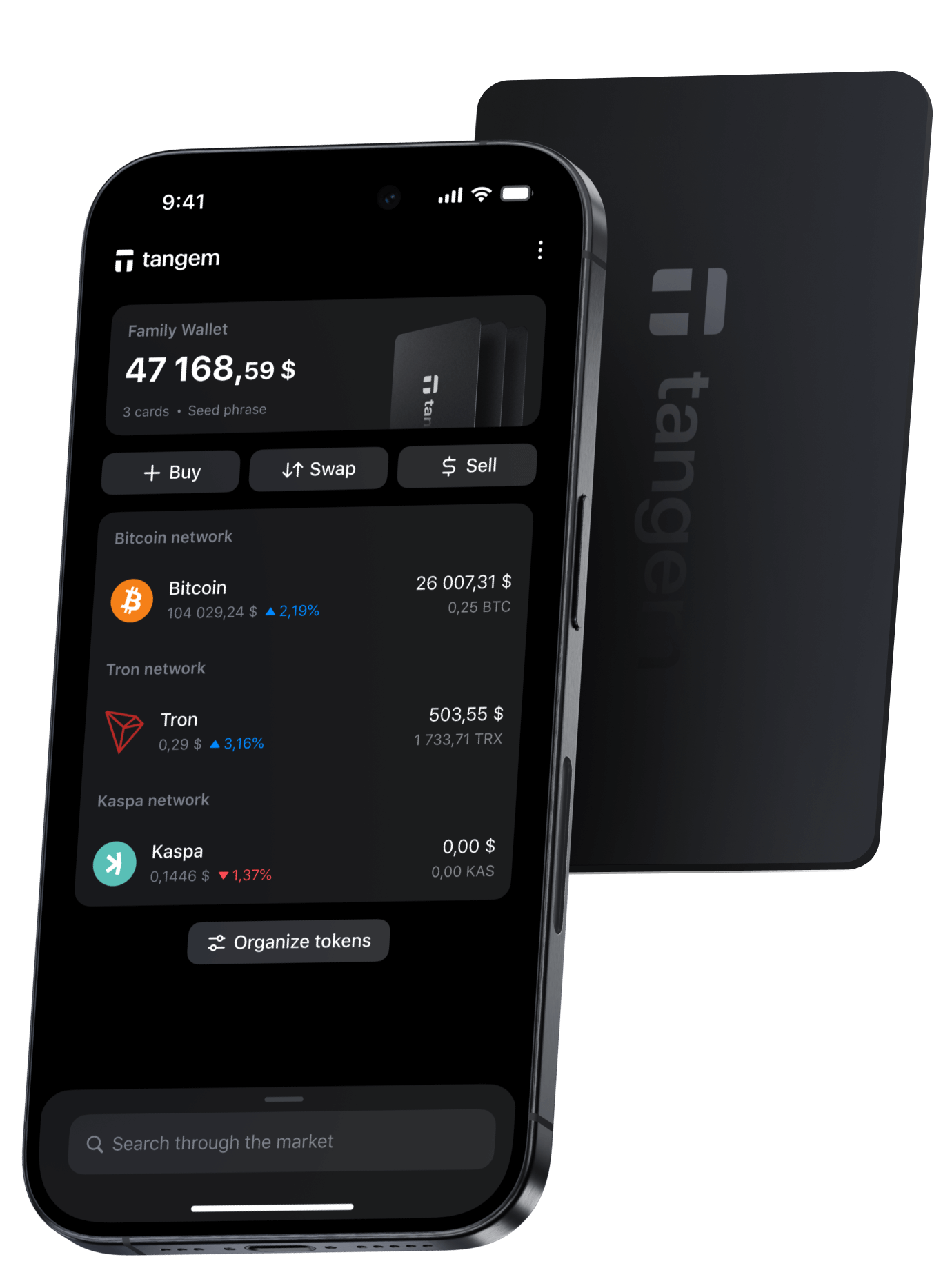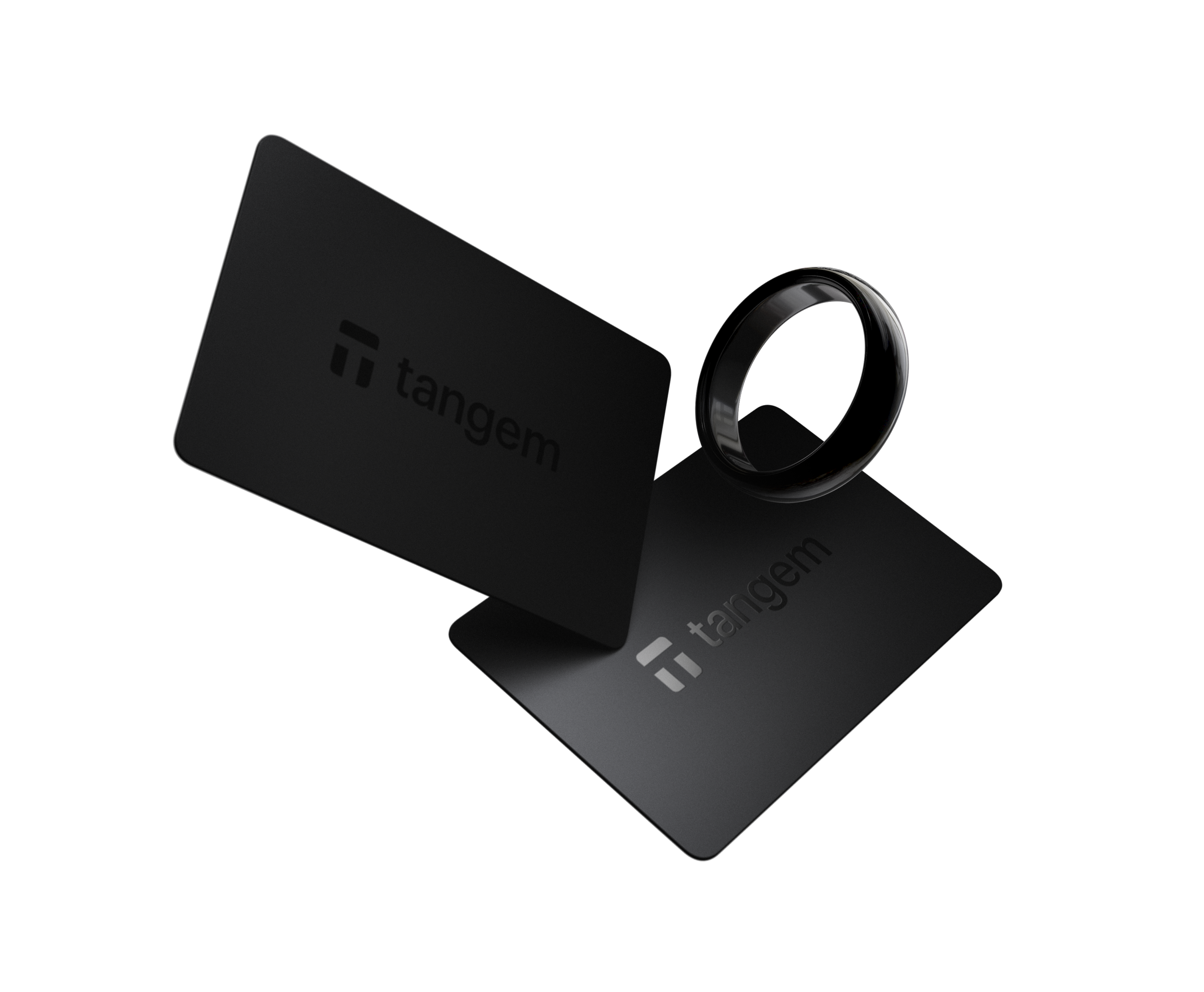
Reserve Rights wallet
The most secure hardware wallet for your Reserve Rights
Join the Tangem family! Secure your Reserve Rights with the trusted choice for dedicated self-custodial protection.

How to secure your Reserve Rights with Tangem?
When you buy or hold Reserve Rights in Tangem, it secures your private keys in many ways:
- With the seedless setup and smart backups on extra devices, your Bitcoin is safe and accessible only to you.
- Tangem is IP69K water and dustproof, built to protect against extreme temperatures, EMPs, ESCs, and X-RAYS.
- An access code and biometric authentication protect against unauthorized access.
- Private keys are generated and stored on its EAL6+ CC secure element.
How to get a Reserve Rights Crypto Wallet?
Tangem products are for everyone, from beginners to experts. They keep your crypto safe and easy to manage. With cutting-edge technology, Tangem lets you control and protect your digital assets.
Get TangemWhy choose Reserve Rights wallet with Tangem.
What is Reserve Rights (RSR)?
Reserve Rights, often abbreviated as RSR, is a versatile platform that operates on the Ethereum mainnet. It is designed to create, manage, and regulate asset-backed currencies known as RTokens. Each RToken is backed on a one-to-one basis by corresponding assets, facilitating their on-chain minting and redemption without the need for intermediaries. Introduced on the Ethereum mainnet in October 2022, the Reserve Protocol boasts a proven track record of security due to its multiple audits.
What is a Reserve Rights wallet?
A Reserve Rights wallet is a tool that manages your private keys for your RSR address. It doesn’t store your Reserve Rights directly; rather, these assets exist on the blockchain. The wallet’s primary role is to generate and safeguard your private keys, ultimately enabling you to manage your RSR accounts seamlessly. Simply put, a Reserve Rights wallet allows you to store, send, receive, and oversee your RSR holdings.
How does a Reserve Rights wallet work?
Reserve Rights wallets function using a pair of cryptographic keys: one public and one private. The public key is safe to share and is used for receiving RSR, while the private key must be kept secret as it permits access to your RSR account. To send RSR, the corresponding private key is necessary. Devices like the Tangem Wallet generate and store these private keys securely within their hardware.
What are the types of Reserve Rights wallets?
Exchange Reserve Rights Wallets:
Services like Coinbase and Binance allow for trading traditional currencies for RSR through custodial wallets. However, users take on risks like the loss of account access.Software Reserve Rights Wallets:
These are applications installed on your devices to manage your private keys and RSR. They offer user-friendliness but are susceptible to malware. They come in mobile, desktop, and browser forms.Mobile Reserve Rights Wallets:
These are apps designed for managing RSR directly from your smartphone.Desktop Reserve Rights Wallets:
Installed on PCs, these wallets store private keys on your computer’s hard drive or SSD.Hardware Reserve Rights Wallets:
Offline solutions like Tangem prevent online security threats by keeping keys away from internet vulnerabilities.
How to Choose the Best Reserve Rights Wallet
Choosing the right wallet involves considering your specific priorities such as ease-of-use, trustworthiness, longevity, and protection. Hardware wallets like Tangem are recommended for their ability to shield large amounts from cyber threats.

Tangem supports other cryptocurrencies
Reliability and convenience at your fingertips. Manage thousands of cryptocurrencies with peace of mind anywhere and anytime
See all supported cryptosReserve Rights FAQ
- You can buy Reserve Rights on major cryptocurrency exchanges like Binance, Coinbase, or Kraken. You can also use P2P platforms or specialized exchange services. For safe storage, it is recommended to use a reliable wallet like Tangem.
- For long-term storage of Reserve Rights, a cold wallet such as Tangem is the best choice, offering a high level of security. For active transactions, a hot wallet is more convenient but less protected from hacking.
- Transfer fees for Reserve Rights depend on the blockchain network load and the exchange or wallet used. Typically, this includes a network fee (gas fee) and possibly additional fees from the platform.
- To create a wallet for Reserve Rights, install the Tangem app, follow the instructions to set up a cold wallet, and generate a unique address for storing your cryptocurrency.
- Reserve Rights (RSR) isan ERC-20 token that plays a crucial role in the Reserve Protocol. Launched in May 2019, RSR serves two primary functions: overcollateralization of Reserve stablecoins (RTokens) through staking and governance of these tokens through proposing and voting on changes to their configuration.

Something went wrong
Buy now – you might get lucky!
30 lucky orders will get 100% cashback on their Tangem Wallet.
00:00:00

